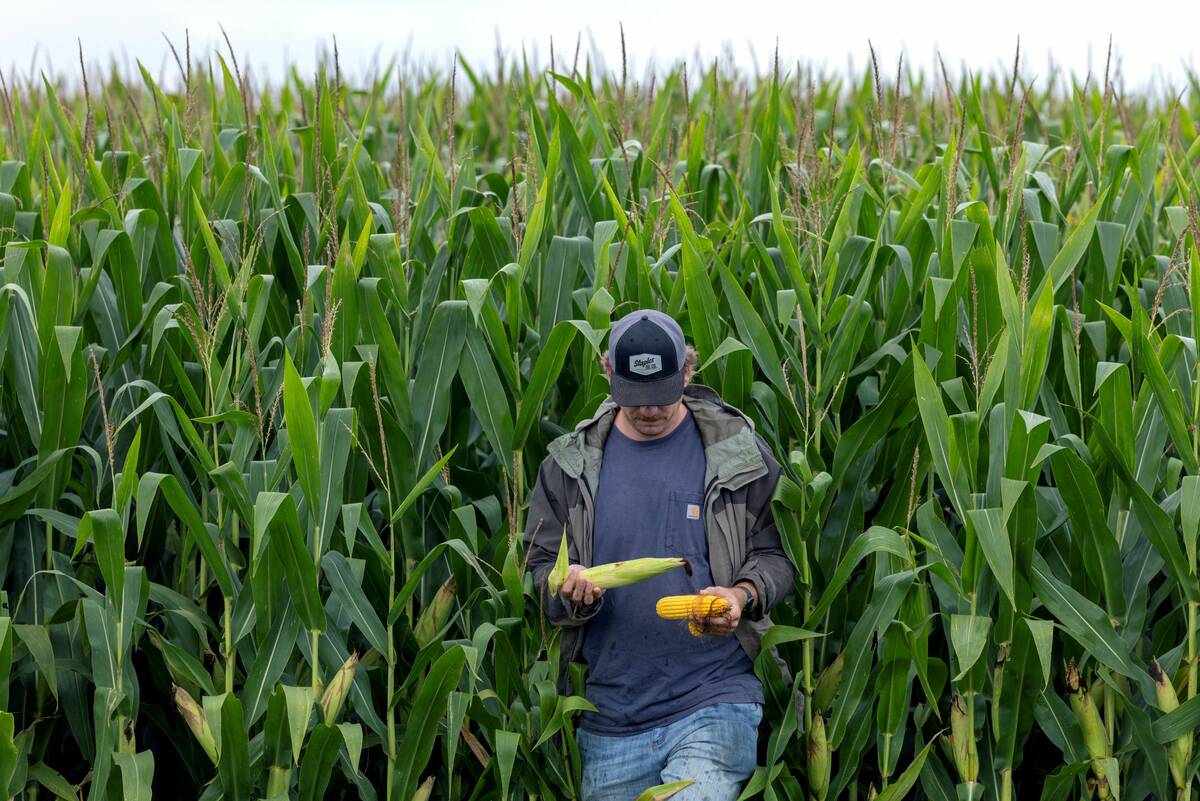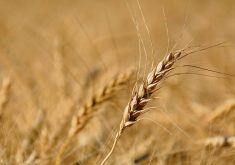CNS Canada –– This summer’s erratic weather has taken its toll on plant development in Alberta and parts of western Saskatchewan, according to crop-watchers in those areas.
“We have heard that dry conditions have caused plants (peas) to slough off or have the tillers dry off and have lost those heads,” said Barry Yaremcio at Alberta’s Ag-Info Centre in Stettler.
“One guy was saying his neighbour got 12 to 15 bushels an acre and he was getting 21. So definitely we’re looking at below-average yields,” said Ag-Info Centre crop specialist Harry Brook.
Read Also

The U.S. corn crop could be the biggest ever. That’s terrible news for America’s farmers.
The USDA predicts a record corn crop for U.S. farmers, who question the agency’s accuracy amidst high debt and low crop prices.
So far peas, fall rye, winter wheat and some lentils have started to come off. Yaremcio said dry weather helped to speed up the harvest.
“Some guys are also swathing barley; the crop came along a lot faster because of the dry conditions — just matured quicker than normal,” he said.
However, while rain in the last few days of July and early August helped replenish many Alberta plants, Yaremcio said some crops just didn’t make it.
“In the area that didn’t get the good rains the first part of August, lots of the crop is being cut for greenfeed or silage. Crop insurance is writing them off.”
The Pincher Creek area in southwestern Alberta is the one region he’s heard of that had great crops, but crops there received two to three inches of moisture in late May and early June, he noted.
As for the rest of the province, Brook said he feels some of the later-seeded crops may have an advantage over earlier-seeded fields “because they got the rain in a more timely manner.”
Western Saskatchewan is harvesting and encountering many of the same moisture issues, according to Norm Hall, president of the Agricultural Producers Association of Saskatchewan (APAS).
“Lentils in the southwest are about a third to two-thirds of normal while the winter wheat near Wynyard (about 180 km east of Saskatoon) is a little bit below normal.”
While the western half suffered from a lack of moisture, the same can’t be said for crops to the east of Moose Jaw or Prince Albert.
“East of that and the crops are closer to average. In the northeast there’s reports of fantastic-looking crops,” said Hall.
Some eastern areas have had so much rain in the past few weeks that some lentil fields have desiccated on their own — but farmers, Hall said, “can’t get equipment out there; there’s too much water.”
— Dave Sims writes for Commodity News Service Canada, a Winnipeg company specializing in grain and commodity market reporting. Follow CNS at @CNSCanada on Twitter.










